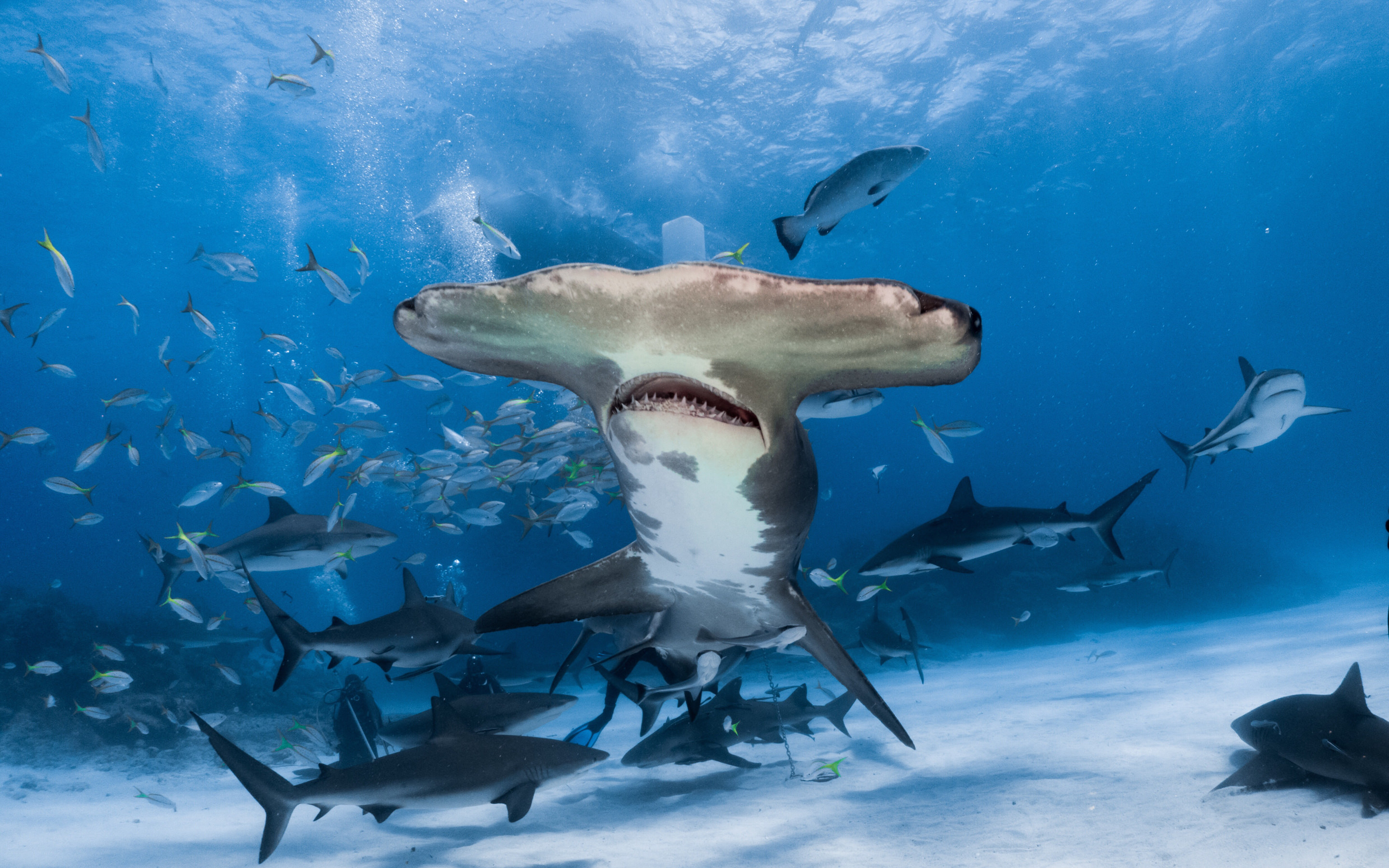Nobody wants to run into a shark in the ocean, but these marine predators serve a big purpose. What happens when sharks stop appearing in our neighborhood waters?
I love sharks, but from like, a distance. I love Shark Week. I love learning about the size of their mouths, their ancient ancestors, how their bodies work.
But I don’t love them when I’m surfing or kicking around in the tide with my kids. And I don’t love that I know most shark attacks happen in shallow water. However, considering chance of a shark attack is 1 in 3.75 million my fear is just that — a fear.
Creepy and sinister looking though they may be, sharks are one of the most fascinating creatures in the world’s oceans. Beyond being a biological anomaly, with crazy blood-tracking super smell powers and rows of jagged teeth, sharks play an important role in the world’s ecosystems.
Read more: Why The Recovering Americas Wildlife Act Is Essential
Why are Sharks so Important?
Sharks are at the top of the food chain in the ocean — few animals come close to their hunting abilities. But being an apex predator also means that shark populations and dining habits have a massive impact on the surrounding ecology.
Sharks are super important because they have a direct impact on the population of the other fish in the world waters. Preying on sick and dying animals, sharks prevent diseases from spreading, however morbidly, keeping genealogy strong and the very best of each species thriving.

What’s Happening to Sharks?
The news isn’t good — the world’s great sharks, some of the world’s oldest predators, are disappearing.
Overfishing has led to a massive decline in the populations of some of the oceans’ most iconic sharks, such as the Great White and Hammerhead. Scientists estimate that hammerhead populations alone have declined by as much as 99 percent in the last 40 years.
Fisheries Are Feeling It
If the loss of ecological diversity wasn’t gut-wrenching enough, the economic impact of the sharks slow and steady decimation has been unexpectedly troubling. Ripple effects from the loss of these predators in regions of the world’s oceans have dried up sources of commercial seafood for many fisheries, resulting in the closure of some who have been impacted.
“In working with tiger sharks, we’ve seen that if we don’t have enough of these predators around, it causes cascading changes in the ecosystem, that trickle all the way down to marine plants.”
— Mike Heithaus, Executive Director of Florida International University’s School of Environment, Arts, and Society
In addition to sharks’ impact on the local populations of other animals lower on the food chain, many species provide a massive draw for ecotourists. As populations decline, scientists are estimating a loss of approximately $250,000 for just a single reef shark in dive tourism revenue.
As fisheries harvest sharks for meat and a one-time profit, ecotourism businesses are struggling to recover the loss of interest — and revenue — from these fascinating creatures’ disappearance.
Read more: Why You Should Care About Massive Seafood Waste
Taking Action: The OCEARCH Initiative Steps Up
We’re big fans of Costa del Mar around here, a cool on-the-water sunglasses brand that we’ve fallen head over heels in love with for their environmental initiatives and rock-solid design.
In addition to their Untangled Collection (made from recycled fishing nets), Costa has teamed up with OCEARCH to provide the world’s most misunderstood animals a ray of hope.
The OCEARCH initiative is an at-sea lab led by a team of researchers who are working hard to connect the data points between sharks and the changing ocean environments. It’s not easy taking an ocean census, but this team is dedicated to keeping an eye on shark populations, and figuring out how their dwindling numbers are affecting the surrounding environment.
To show their support, sunnies purchased from Costa’s OCEARCH collection will support the efforts of these researchers as they work to protect a species that, by all accounts, have been a bit burned by humanity.
Check Out Costa’s OCEARCH Sunnies
Costa sent us a couple of pairs of their sunglasses to try so we could fill you in on what they’re like in person. Here’s what we got:
OCEARCH Kare
These sunglasses have a really different feel than the ones from the Untangled collection. The plastic is smooth and highly polished. True to Costa’s reputation, these sunnies are thick, sturdy, and clearly built to last.
What I really love about these is that even for someone with a REALLY big head like me, they fit comfortably, but they were still tight and springy enough for my four-year-old to wear them comfortably.
While the frames themselves were a bit small for my face shape, I love these for my kids — or maybe even just someone with a smaller head.
South Point Classic Aviators
These aviators come from Costa’s Beach Lifestyle collection and are the epitome of beachy cool. Beyond just having a fantastic frame cut and perfect aviator look, these things are STURDY. Far from your typical pair of super bendable metal sunglasses, these feel like a fixture for your face, not a cheap gas station find — well worth the money.
Have feedback on our story? Email [email protected] to let us know what you think!

Shop Pillows
The Essential Organic Pillow Collection
Gentle, breathable, non-toxic support.





